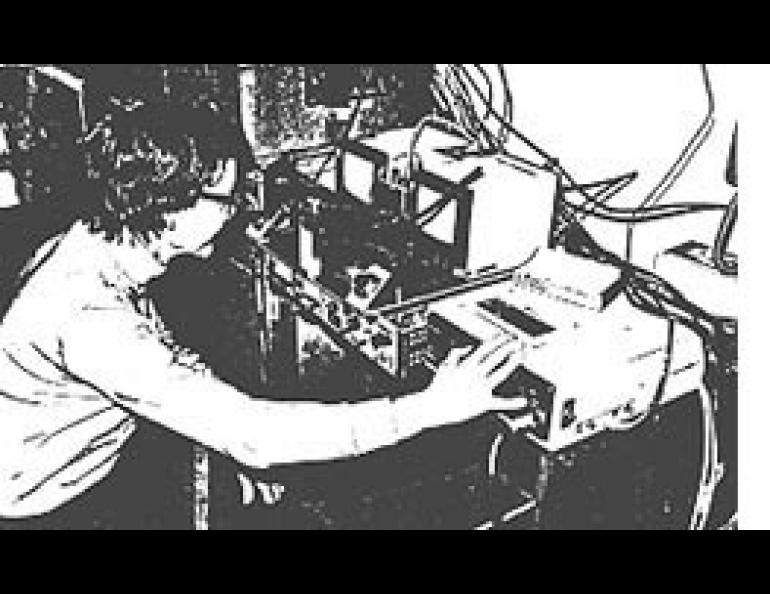
Stereo Viewing of Aurora
Since the Northern Lights rarely, if ever, reach down below altitude 60 km (about 38 miles), the earthbound observer is unable to perceive that the aurora has depth. The bottom of the aurora typically lies near altitude 100 km and its top is usually several tens of kilometers, sometimes several hundreds of kilometers, higher. But when it comes to viewing an object this far away, a person's eyes are too close together to permit visual depth perception. In effect, two eyes are no better than one for viewing objects so far away.
Two scientists at the Geophysical Institute have solved the problem by using two sensitive televisions to record auroral images. Dr. Tom Hallinan operates one camera located atop the Geophysical Institute and Professor Hans Nielsen operates another at his home two kilometers away. Both cameras are aimed in the same direction so that they see the same aurora. The pictures obtained by Professor Nielsen's televisor set are transmitted over a radio link to the Geophysical Institute where they and the pictures obtained by Dr. Hallinan's television are recorded on separate tracks of a video recorder.
Played back into two small televisor sets placed side by side in front of a stereo viewing machine, the images show a true stereo effect. This arrangement allows a two-eyed person to view the aurora as if it were only ten feet away, close enough to permit a spectacular 3-dimensional scene of aurora dancing across the sky.





